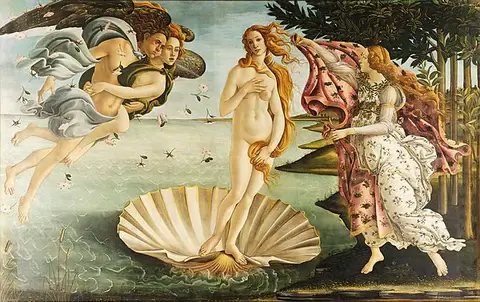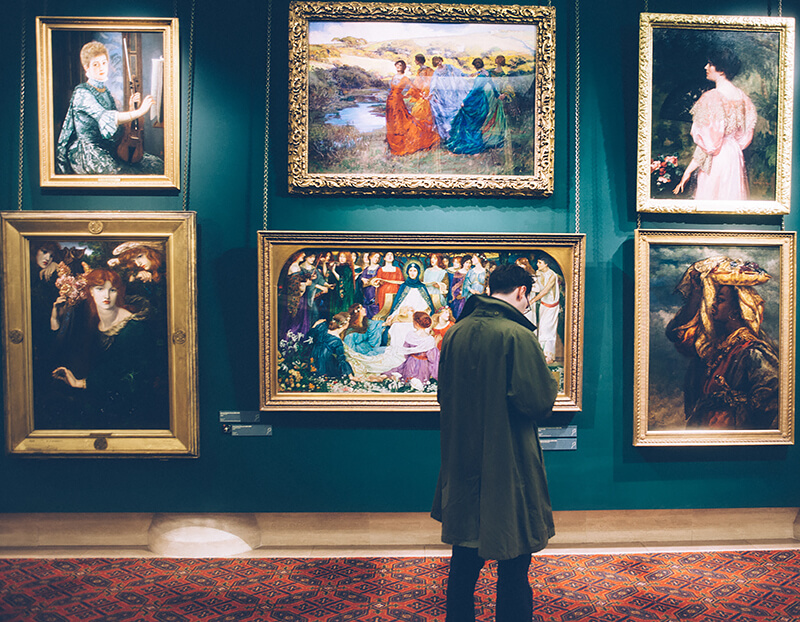The Renaissance, a cultural movement that spanned roughly from the 14th to the 17th century, represents one of the most extraordinary periods in the history of art. Emerging from Italy, this era was marked by a profound transformation in artistic techniques, perspective, and subjects, driven by a renewed interest in humanism, nature, and classical antiquity. The aesthetic beauty of Renaissance art lies in its intricate balance of realism, idealism, and symbolism—aspects that revolutionized the way artists saw the world and expressed the human experience.
The Rise of Humanism and Realism
One of the key aesthetic features of Renaissance art is its focus on humanism. During the Renaissance, there was a significant shift towards celebrating the potential and beauty of human beings, emphasizing their intelligence, physicality, and emotional depth. This human-centered philosophy influenced the subject matter of art, leading to depictions of ordinary people, mythological figures, and biblical characters in ways that made them seem more relatable and real.
In pursuit of capturing the beauty of the human form, Renaissance artists like Michelangelo and Leonardo da Vinci employed techniques that showcased an unprecedented level of detail and anatomical accuracy. Michelangelo’s sculptures, such as David, exemplify this ideal—depicting the human body in a manner that reflects both physical perfection and emotional expression. Leonardo’s Vitruvian Man exemplifies the period’s fascination with the mathematical proportions of the human body, linking art and science in a unified pursuit of knowledge and beauty.
The development of realism also marked a significant leap forward in the aesthetic experience of art. Artists were no longer merely content with creating symbolic representations; they sought to bring their subjects to life. The use of chiaroscuro (contrast between light and dark) by artists like Caravaggio added depth and volume to their work, resulting in an almost three-dimensional quality that drew viewers into the scenes they painted. This masterful control of light allowed artists to convey emotions, movement, and atmosphere, transforming two-dimensional surfaces into dynamic and evocative portrayals.
Perspective: A Window into the World
The Renaissance also saw the introduction of linear perspective, which revolutionized the way space and depth were depicted in art. Before this development, medieval paintings often appeared flat and lacked realistic depth. Renaissance artists such as Filippo Brunelleschi and later Masaccio pioneered techniques that allowed them to create the illusion of space on a flat surface, making paintings appear as if they extended into the viewer’s environment. This innovation added an unprecedented sense of realism and immersion to their work.
One notable example of perspective in Renaissance art is Raphael’s The School of Athens, where the use of vanishing points and geometric composition creates a convincing spatial environment. In this fresco, Raphael celebrates classical philosophy and knowledge by depicting figures such as Plato and Aristotle within an architecturally majestic setting that feels both grand and real. The use of perspective draws the viewer’s eyes to the central figures, creating a harmonious balance between complexity and clarity, contributing to the overall aesthetic impact of the piece.
The Use of Color and Light
Renaissance artists also paid particular attention to the use of color and light to achieve a sense of naturalism. Titian, one of the great Venetian masters, utilized rich, vibrant colors to add warmth and sensuality to his work. The Venetian school of painting became renowned for its coloristic brilliance, with artists using multiple layers of glazes to achieve luminous, lifelike finishes that captured the essence of their subjects.
The careful modulation of color, along with the innovative use of light, enabled Renaissance artists to create mood and emphasize particular elements within their work. In Leonardo da Vinci’s The Last Supper, the interplay of light guides the viewer’s focus to the figure of Christ, subtly conveying his significance among the apostles. The combination of detailed composition, nuanced color, and sophisticated lighting resulted in works that were visually compelling and deeply resonant.
Symbolism and Storytelling
Beyond the technical brilliance of Renaissance art, its aesthetic beauty is also characterized by the rich use of symbolism and storytelling. The Renaissance was a time when artists used visual symbolism to add layers of meaning to their work. Religious and mythological subjects were filled with allegory and metaphor, providing viewers with a deeper understanding of the human condition and the mysteries of existence.
Sandro Botticelli’s The Birth of Venus is a quintessential example of Renaissance symbolism. Venus, the goddess of love, is depicted emerging from the sea on a shell, symbolizing the birth of beauty and the divine nature of love. The graceful lines, soft colors, and ethereal quality of Botticelli’s painting evoke a sense of otherworldly beauty that is both captivating and timeless. Each element in the painting contributes to a broader narrative, inviting the viewer to ponder the philosophical ideas underlying the visual representation.
Similarly, Jan van Eyck’s The Arnolfini Portrait is filled with intricate details and symbols that enrich the narrative. From the mirror reflecting the scene to the small dog representing fidelity, every aspect of the painting contributes to its depth and meaning. Van Eyck’s meticulous attention to detail and his ability to imbue everyday objects with symbolic significance highlight the intellectual beauty of Renaissance art, where each work serves as both an aesthetic experience and a vessel of meaning.
The Legacy of Renaissance Aesthetics
The aesthetic beauty of Renaissance art lies not only in its technical achievements but also in its power to connect with viewers on multiple levels. The artists of the Renaissance were able to convey the complexity of the human spirit, the beauty of the natural world, and the mysteries of existence in ways that were innovative and profound. Their use of perspective, color, light, and symbolism transformed art from a mere craft into an intellectual and emotional endeavor that continues to inspire awe to this day.
The legacy of Renaissance aesthetics is evident in the continued reverence for works from this period. The balance of realism and idealism, the dedication to capturing the essence of humanity, and the pursuit of beauty through technique and storytelling have left an indelible mark on the art world. Renaissance art remains a benchmark for artistic excellence, reminding us of the enduring power of creativity to transcend time and speak to the core of the human experience.
Final Thoughts
Exploring the aesthetic beauty of Renaissance art reveals a rich tapestry of innovation, humanism, and profound expression. From the masterful use of perspective and realism to the symbolic depth and vibrant colors, Renaissance artists redefined what art could achieve. Their legacy continues to captivate and inspire, offering timeless beauty and insight into the human condition. The Renaissance was not merely a period of artistic growth; it was a celebration of the potential of human creativity, an era that still resonates with viewers today, inviting them to step into a world where art and beauty are one.
























